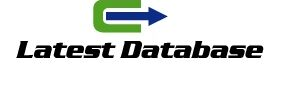Will help shape the development process, as well as mold the management, sales, and marketing strategies. 2. Define the audience and target Defining the user Whose life will get better because of this product? What need does the product meet in this person’s life? It’s important to take a look at the target market and identify exactly which needs or pain points are being addressed by the product. This will help create a list of requirements the product must have in order to meet these needs.
Research the competition
A product vision is probably starting to job function email list come through, but it’s crucial to look at the competition and understand why your product’s vision is different. What needs does this meet that the competitors do not? What is unique? Answering those questions can help to shape the vision and pivot away from already existing products. 4. Create an inspiring message and vision When the customer reads the product vision, ideally they are motivated to buy your product or service.
Here are some examples
Of product visions that do just that: American how to use an amex, mastercard, or visa gift card on amazon Express: “We work hard every day to make American Express the world’s most respected service brand.” Honest Tea: “to create and promote great-tasting, healthy, organic beverages.” IKEA: “To create a better everyday life for the many people.” 5. Keep it brief It will probably be difficult to cut down all of the words you want to use in the product vision, but something short and sweet usually goes over better with customers.
Your team will most likely end
Up with different varieties of product american samoa business directory vision statements, so try to combine them and eliminate elements or ask outsiders which resonates with them better. If you’re truly struggling to create a product vision, try using this template to kick off the brainstorming: For (target customer) Who (statement of need or opportunity) The (product name) is a (product category) That (key benefit, a reason to buy) Unlike (primary competitive advantage) Our Product (statement of primary differentiation) Next Steps for Your Product Vision Once the product vision is complete, be sure to allow it to guide decision-making.

